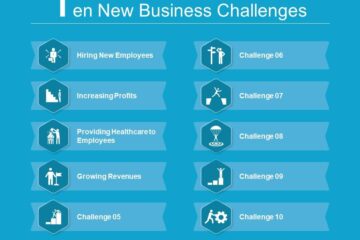Over more than three centuries, the Duke of Westminster’s family holdings have survived some of the most severe stress tests imaginable: multiple wars, a score of wrenching recessions and a couple of dozen market collapses.
Yet as countless far smaller and less wealthy dynasties can attest, no conflict, depression or crash can compare to the trauma that succession can sometimes inflict. The sudden death this week at age 64 of Gerald Cavendish Grosvenor, the sixth duke, not only hands the title and the estate to his 25-year-old son, Hugh. It also brings the latest test of durability for an empire founded on 300 acres of land and property in west London that the late duke helped to modernise, and which underpins the white-stucco façades of Mayfair, Belgravia and beyond.
Interviewed on the BBC radio show Desert Island Discs in 1995, the duke said: “I’m only a mere flicker in the process of time and the process of history.” His pained awareness of the burdens and responsibilities of great inherited wealth started whenhe received the news as a teenager — from a Daily Mail reporter who tracked him down at his boarding school — that his father had received the title. When Gerald rang home to ask what was going on, his father, who had deliberately shielded his son from the likely consequences of a convoluted succession, said: “Ah yes, we need to talk about that.”
“I remember him sitting me down and really the dawn of the realisation of what was ahead of one almost made me run for the door, slam it and keep on running,” the duke told the BBC later.
Instead, after some years in which he travelled widely, drove cars fast — crashing frequently — and struggled to come to terms with a fortune that stands at more than £9bn, Gerald sought to understand the property business his ancestors had built.
Smart address
Seeded by an arranged marriage in 1677 between Sir Thomas Grosvenor and Mary Davies, 12-year-old heiress to 500 acres of swampy farmland west of the capital, the estate was laid out and developed by the family in the 1700s. It includes some of London’s most exclusive addresses, such as Chester Square (where Lady Thatcher lived), Grosvenor Square, site of the US embassy, the freehold of which family trustees refused to sell to the US, and such well-known London locations as the Beaumont Hotel and the Gagosian Gallery.
The family’s roots, however, were in Cheshire — where William the Conqueror had sent a kinsman to secure the English border with Wales.
The duke, whose childhood in rural Northern Ireland left him with a strong Irish accent that was bullied out of him at boarding school, always said he was ill at ease in the capital.
Despite the lure of the country, and the Territorial Army, the UK’s volunteer reserve force, in which he served for 42 years, the duke also helped to haul the family estate into the modern age — a process undergone by several of England’s landed estates.
When his father died in 1979, London was reeling from the property crisis of the early 1970s. The estate was still paying off an £11m death duty bill — £200m in today’s terms — left on the death in 1953 of the second duke, known as “Bendor”, who was described as a mixture of Henry VIII and Lorenzo de’ Medici.
“To put it mildly, we had a bit of a problem,” the sixth duke told the Financial Times in 2004. “Ted Heath [then Conservative prime minister] managed to yank inflation up to 26 per cent and then we had the miners’ strike and the fuel crisis.” Jimmy James, executive trustee of the estate, had to fly to Canada on a regular basis “just to keep that business afloat while our home base was leaking like a sieve”, he said.
It is only one of many crises the Grosvenor family estate has survived — often thanks to the enduring, and appreciating, value of its London investments.
“When London became Europe’s largest city in the 18th century, the expenditure was enormous and that’s how some of these families got into difficulty. To be fashionable, you had to have the latest Chippendale furniture, the latest chandeliers and carriages,” says Alex Werner, the Museum of London’s head of history collections.
In the 1770s, one Lord Grosvenor had run up debts of £150,000 maintaining a Newmarket racing stable, as well as his Cheshire estate, and making payments to his estranged wife.
Advised by his agent to sell all except the 100 acres of Mayfair and Belgravia, he prevaricated long enough to be rescued by increasing income from the London holdings.
Other landed estates benefited from 400 years of relatively flat English land values until the second world war, according to Simon Pring, head of the estates team at Farrer & Co.
But some relatively passive, rent-collecting businesses have become quasi-multinationals, developing and managing properties worldwide. With its expansion into 60 cities, Grosvenor Group — the holding company for the Duke of Westminster’s property — has become one of the most successful.
“Landed estates obviously had a massive amount of historical good luck, but good luck without hard work is a dead end,” says Bruce Dear, a real estate partner at Eversheds, the law firm.
Shrewd succession and tax planning helped the late duke to avoid further punitive death duties when his father died. But Gerald and his advisers also built on a long-established trustee structure put in place after Lord Grosvenor’s gambling-fuelled flirtation with disaster. They delegated operating responsibility to a series of executives, reducing the possibility that a future playboy duke might wreck everything.
Property market
Today the estate is divided into the Grosvenor Group, which manages £13.1bn of mainly urban real estate — including assets run for third parties — and employs 567 people; Wheatsheaf, which invests in agricultural and renewable energy businesses; and the family office, which employs another 470 people and manages rural estates in the UK and Spain, plus other interests such as fine art. The family art collection includes works by Velázquez, Stubbs and Rembrandt.
The property division directly owns 1,550 properties, with a speciality in urban regeneration. Overseas, they include shopping centres in Vancouver, Stockholm and Shanghai, and luxury developments in Hong Kong and Tokyo.
People who knew the duke professionally describe him as hard-working and socially aware, with a sometimes smutty sense of humour and a human touch. In his private life, he was a great shot and a chain-smoker (latterly of ecigarettes).
In 1999, the duke suffered a breakdown and by the 2000s, he seemed “more than happy to leave it to [the CEO] to set the strategy” and concentrate on running the TA reservists, says one person who dealt with Grosvenor Group. “Mind you, it’s the sign of a good leader that they appoint really clever people to do the work for them.”
It would be wrong to assume, though, that the duke turned the family into absentee landlords, or to believe that success was ever guaranteed. Even in the more professional modern era, not all aristocratic estates have adapted successfully. The best-run family companies exert what Egon Zehnder, the executive search group, has called “family gravity”, with “one key family member … standing at the centre of the organisation, like the sun in our solar system”.
Doing business
Families also set the tone for how business is done by the professionals and family ownership leaves room for personal generosity. The duke made a founding gift of £50m to the Defence and National Rehabilitation Centre for wounded services personnel, to be opened in 2018. Guy Butler, former projects director at Grosvenor Group and now a director of Manchester-based developer Glenbrook, also recalls how, in the early 2000s, “we all came back from lunch and everyone had a £1,000 cheque on their seat … It was just for the workers, not the directors”.
At the same time, the duke’s influence was evident in riskier business decisions, such as Grosvenor Group’s backing for the £1bn Liverpool One shopping centre, which opened in 2008 and, in the words of one industry figure, “would have probably bankrupted a lesser firm”. One of the duke’s choices for Desert Island Discs was the song “Ferry Cross the Mersey”. Without his “personal commitment and faith in Liverpool”, it was unlikely the complex would have been built, says Richard Kemp, a Liberal Democrat councillor in Liverpool.
Benign ducal oversight cannot insulate Grosvenor Group from business realities, however. In its 2015 annual review, the group’s research director warned it was entering “a key period of large-scale change across a range of fronts” and that global real estate returns were “past their peak for the current cycle” and “increasingly susceptible to even small shifts in sentiment”.
Modern management of the business has served the duke’s family well. His wealth grew from £6.5bn in 2009 to £9.4bn this year, according to Estates Gazette, helped by a focus on what were some of the fastest-appreciating areas of the capital and attention to detail.
Careful tax planning is likely to protect Hugh Grosvenor from the inheritance tax burdens his predecessors struggled with, and his father’s work in professionalising the business will relieve him of any need to micromanage Grosvenor Group. But the seventh Duke of Westminster still has the task of leading the estate — and the family — into deeply uncertain times.
[Source: FT]



